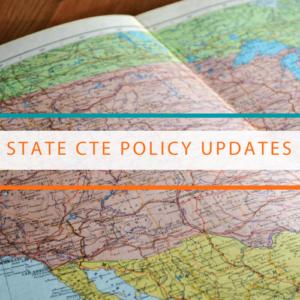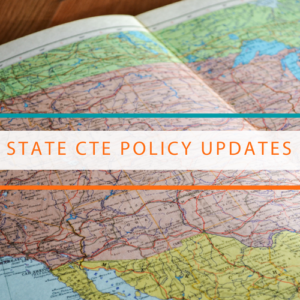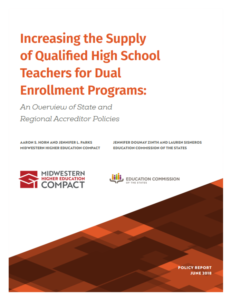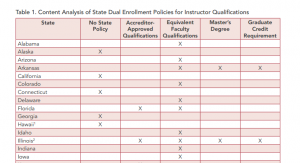This is the second part of a series exploring the 2016 presidential candidates positions, records and statements about Career Technical Education (CTE). This post examines the Democratic ticket. A previous post covering the Republican ticket is accessible here.
An Advocate for Children and Families, Clinton Sees Opportunity in Free College
With decades in the public eye, Democratic Nominee Hillary Clinton has had ample opportunity to define and hone her position on education, which she says should be the great door-opener. Her campaign aims to knock down barriers to the middle class through apprenticeships, career technical education (CTE) and debt-free college.
Clinton’s work in public education dates back to 1983 when, in her role as First Lady of Arkansas, she led an initiative to develop more rigorous standards for public schools in the state. Years later, as New York’s junior Senator, she went on to serve on the Senate Health, Education, Labor and Pensions (HELP) Committee. There, she worked on two foundational pieces of education legislation: the No Child Left Behind Act and the Carl D. Perkins Career and Technical Education Act (Perkins).
Clinton’s education policy platform for the 2016 election aims to expand access to the middle class by removing barriers to higher education. She has proposed a plan to make community colleges free and to cover the cost of tuition at in-state four-year public colleges and universities for families making less than $125,000. These proposals are loosely based on similar efforts in Tennessee and other states that have seen increased enrollment and higher retention rates at community and technical colleges.
As crucial as college is, Clinton asserted in her Democratic National Convention speech in July that, a four-year degree should not be the only path to a good job. She went on to say we’re going to help more people learn a skill or practice a trade and make a good living doing it. To do this, her campaign has proposed a tax credit of up to $1,500 for businesses hosting apprentices and is considering options to incentivize CTE programs and help provide grants to train workers for the 21st century economy.
Tim Kaine’s Support for CTE Dates Back to His Work as a Teacher in Honduras
Perhaps the lengthiest CTE resume this cycle goes to Democratic Vice Presidential Candidate Tim Kaine. His education record, which includes broad initiatives as Virginia Governor and tireless support for CTE in the Senate, dates all the way back to his childhood.
The son of a welder, Kaine briefly helped manage a technical school in Honduras before returning to complete his law degree at Harvard University. Kaine’s interest in CTE followed him to the Virginia Governor’s mansion where, in 2008, he announced an initiative to create six Career and Technical Academies across the state. The initiative, which was launched with a grant from the National Governor’s Association, aimed to align K-12 instruction in STEM fields with workforce and postsecondary expectations, while equipping more students with marketable skills that lead to high-demand, high-wage careers.
In Virginia, Kaine also launched the Governor’s CTE Exemplary Standards Awards Program, which recognizes CTE programs that align with industry standards, effectively engage local partners, provide relevant and integrated academic and technical instruction, and more.
In the Senate, Kaine co-founded the bipartisan CTE Caucus along with Senator Rob Portman (R-OH) in 2014, stating that career and technical programs can strengthen the links between the classroom and the workplace, helping students acquire the education and skills that will help them find employment and enjoy productive, successful lives after graduation. His work with this caucus has led to the introduction of a number of CTE-related legislation, including the Educating Tomorrow’s Workforce Act, which would establish a formal definition for CTE programs of study within the Perkins Act.
His persistent advocacy for high-quality CTE in the Senate led to a number of legislative victories, most recently in the Every Student Succeeds Act of 2015 (ESSA). With Kaine’s support, ESSA now includes provisions to fund career counseling programs, help teachers integrate academic and technical instruction, add CTE to the definition of a well-rounded education, encourage states to use career readiness indicators in their accountability systems, and fund professional development for CTE teachers.
CTE has long benefited from bipartisan support, and the 2016 election is no exception. With mere months until the election, we look forward to the candidates continuing to elevate high-quality CTE as an effective educational strategy in their platforms, in their speeches and in the debates later this fall.
Austin Estes, Policy Associate
 In Virginia and New Mexico, the state legislatures have taken action to expand opportunities for CTE learners. In Virginia, on March 5, SB1434 was signed into law. The law directs the Virginia Board of Education to revise its Career and Technical Education Work-based Learning Guide to expand opportunities for learners to earn credit for graduation through high-quality work-based learning experiences. The law directs the Board of Education to consult business and diverse stakeholders to inform its revision of the guide.
In Virginia and New Mexico, the state legislatures have taken action to expand opportunities for CTE learners. In Virginia, on March 5, SB1434 was signed into law. The law directs the Virginia Board of Education to revise its Career and Technical Education Work-based Learning Guide to expand opportunities for learners to earn credit for graduation through high-quality work-based learning experiences. The law directs the Board of Education to consult business and diverse stakeholders to inform its revision of the guide.

 The majority of 2018 state legislative sessions have come to a close. During these legislative sessions, states enacted budgets that illustrate a continued commitment to invest in Career Technical Education (CTE) and opportunities for learners to earn credentials that translate into high-skill, in-demand occupations.
The majority of 2018 state legislative sessions have come to a close. During these legislative sessions, states enacted budgets that illustrate a continued commitment to invest in Career Technical Education (CTE) and opportunities for learners to earn credentials that translate into high-skill, in-demand occupations. The report found that criteria for qualifying Career Technical Education (CTE) instructors are mentioned in state-level policies in eight states (Colorado, Illinois, Kansas, Maine, Missouri, Mississippi, Ohio, Virginia). Dual enrollment teacher qualification policies are generally related to education attainment level, but exemptions are sometimes made for CTE dual enrollment instructors. In some of these cases, states allow exemption from qualification rules when instructors can demonstrate proficiency in the field they will teach and consider industry recognized credentials and years of experience working in the field when determining teacher qualifications.
The report found that criteria for qualifying Career Technical Education (CTE) instructors are mentioned in state-level policies in eight states (Colorado, Illinois, Kansas, Maine, Missouri, Mississippi, Ohio, Virginia). Dual enrollment teacher qualification policies are generally related to education attainment level, but exemptions are sometimes made for CTE dual enrollment instructors. In some of these cases, states allow exemption from qualification rules when instructors can demonstrate proficiency in the field they will teach and consider industry recognized credentials and years of experience working in the field when determining teacher qualifications. State Name: Virginia
State Name: Virginia Many states allow students to earn credits in high school that can be applied towards a postsecondary degree or credential — a strategy known as dual, or concurrent, enrollment. While dual enrollment makes it easier and more affordable to obtain a postsecondary credential, states must pass policies to ensure students are receiving this advanced instruction from qualified teachers.
Many states allow students to earn credits in high school that can be applied towards a postsecondary degree or credential — a strategy known as dual, or concurrent, enrollment. While dual enrollment makes it easier and more affordable to obtain a postsecondary credential, states must pass policies to ensure students are receiving this advanced instruction from qualified teachers.